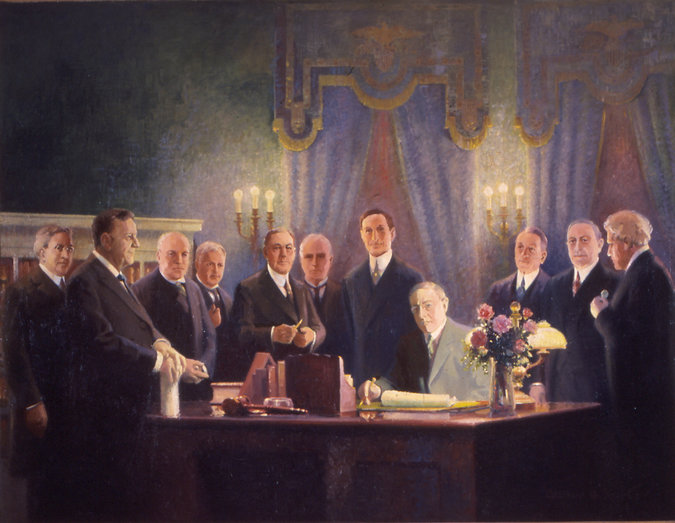MULTIZ321
TUG Member
- Joined
- Jun 6, 2005
- Messages
- 31,372
- Reaction score
- 9,023
- Points
- 1,048
- Location
- FT. LAUDERDALE, FL
- Resorts Owned
-
BLUEWATER BY SPINNAKER HHI
ROYAL HOLIDAY CLUB RHC (POINTS)
'America's Bank,' By Roger Lowenstein - by Robert E. Rubin/ Sunday Book Review/ International New York Times/ The New York Times/ nytimes.com
"Most Americans know the story of that hot Philadelphia summer in 1787 when prolonged debate led to the creation of the United States Constitution to overcome the inadequacies of the Articles of Confederation. Disagreements about the extent of federal power and the design of our democratic institutions were resolved through long arguments and, ultimately, principled compromises.
Few Americans, on the other hand, are familiar with the analogous history of periodic financial crises and economic duress throughout the 19th and early 20th centuries that gave rise to the creation of an effective American central banking system. Decades of fervent debate finally led to the enactment of the Federal Reserve Act in 1913. That is the story Roger Lowenstein tells, vividly and compellingly, in “America’s Bank.” It should be required reading for anyone who is engaged in, or interested in, the actions of the modern Fed, and the continuing debates about those actions and about its governance.
The remarkable tale of the politics, disagreements, decisions and crises that culminated in the Federal Reserve Act is the core of the book. But Lowenstein, the author of several works on economics and finance, builds off it to describe the history of the era, the rise of the Progressive movement, the compromises and machinations that were critical to Congressional passage and the key figures in the drama of creating the Federal Reserve System..."

"The Signing of the Federal Reserve Act," a 1913 painting. Credit Howard Kurtz/Woodrow Wilson Presidential Library, Staunton, Va.
Richard
"Most Americans know the story of that hot Philadelphia summer in 1787 when prolonged debate led to the creation of the United States Constitution to overcome the inadequacies of the Articles of Confederation. Disagreements about the extent of federal power and the design of our democratic institutions were resolved through long arguments and, ultimately, principled compromises.
Few Americans, on the other hand, are familiar with the analogous history of periodic financial crises and economic duress throughout the 19th and early 20th centuries that gave rise to the creation of an effective American central banking system. Decades of fervent debate finally led to the enactment of the Federal Reserve Act in 1913. That is the story Roger Lowenstein tells, vividly and compellingly, in “America’s Bank.” It should be required reading for anyone who is engaged in, or interested in, the actions of the modern Fed, and the continuing debates about those actions and about its governance.
The remarkable tale of the politics, disagreements, decisions and crises that culminated in the Federal Reserve Act is the core of the book. But Lowenstein, the author of several works on economics and finance, builds off it to describe the history of the era, the rise of the Progressive movement, the compromises and machinations that were critical to Congressional passage and the key figures in the drama of creating the Federal Reserve System..."

"The Signing of the Federal Reserve Act," a 1913 painting. Credit Howard Kurtz/Woodrow Wilson Presidential Library, Staunton, Va.
Richard
